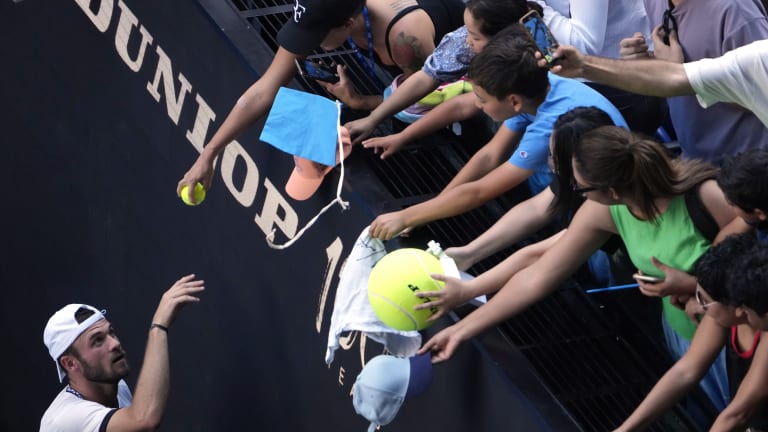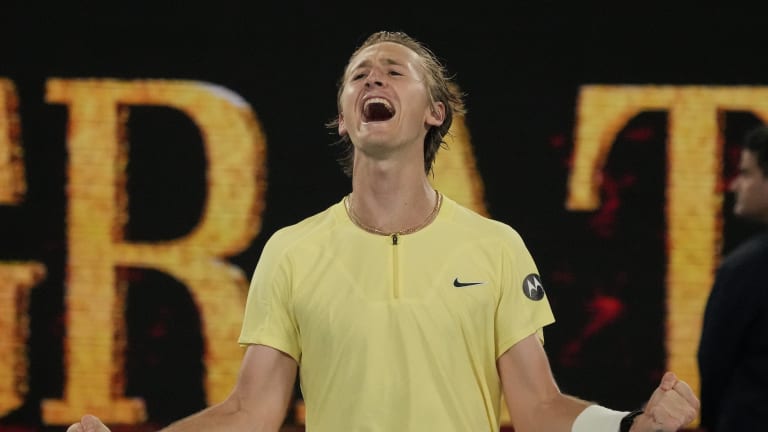"Since I was young, that's all we've been hearing. Since like 14 years old, the coaches have been telling us, ‘We need new Americans. We need new Americans.' It's kind of engraved in my head," Paul said, tapping his temple with his right index finger. "We all want to perform. ... I mean, I think we all want it pretty bad for ourselves, but we want it for U.S. tennis, too."
This breakthrough for Paul, who never had been past the fourth round at a major, comes on the heels of
Frances Tiafoe’s trip to the semifinals at the U.S. Open last September, which included a victory over Nadal before a loss to eventual champion Carlos Alcaraz.
That makes this sequence the first time U.S. men reached the final four at consecutive Slams in 16 years, when Roddick was the runner-up to Federer at the 2006 U.S. Open and lost to him in the semifinals at the 2007 Australian Open.
There's more evidence to support the idea that a country that produced Don Budge and Bill Tilden and Arthur Ashe and John McEnroe and Jimmy Connors and Pete Sampras and Andre Agassi and more but did not matter in men's tennis in recent years — Serena and Venus Williams, along with others, made sure U.S. women stayed at the forefront — must be taken more seriously.
Consider:
— The
Australian Open men's bracket was filled with big wins by 20-something Americans, including
Mackenzie McDonald beating defending champion and No. 1 seed Nadal,
Jenson Brooksby beating No. 2 seed Casper Ruud, and
Sebastian Korda beating the runner-up each of the last two years, No. 7 seed Daniil Medvedev;
— Paul,
Ben Shelton, 20, and Korda, 22, became the first trio of Americans in the men's quarterfinals in Melbourne since 2000;
— There was a stretch of 22 majors spanning about 4 1/2 years in which not a single U.S. man made the quarterfinals at any Grand Slam tournament, a drought that ended when Sam Querrey reached that round at Wimbledon in 2016;
— With Paul set to crack the top 20 for the first time by the end of the Australian Open, and big jumps by others, there are projected to be 10 Americans in the ATP top 50 on Monday, something that last happened in June 1995.
"I don't see why, at the end of this year, we couldn't have five, six guys in the top 20, with the way that some of these guys are playing," said Shelton, who turned pro after winning the NCAA singles title as a sophomore at the University of Florida last year and made it all the way to the quarterfinals in Australia before losing to Paul in four sets Wednesday.

